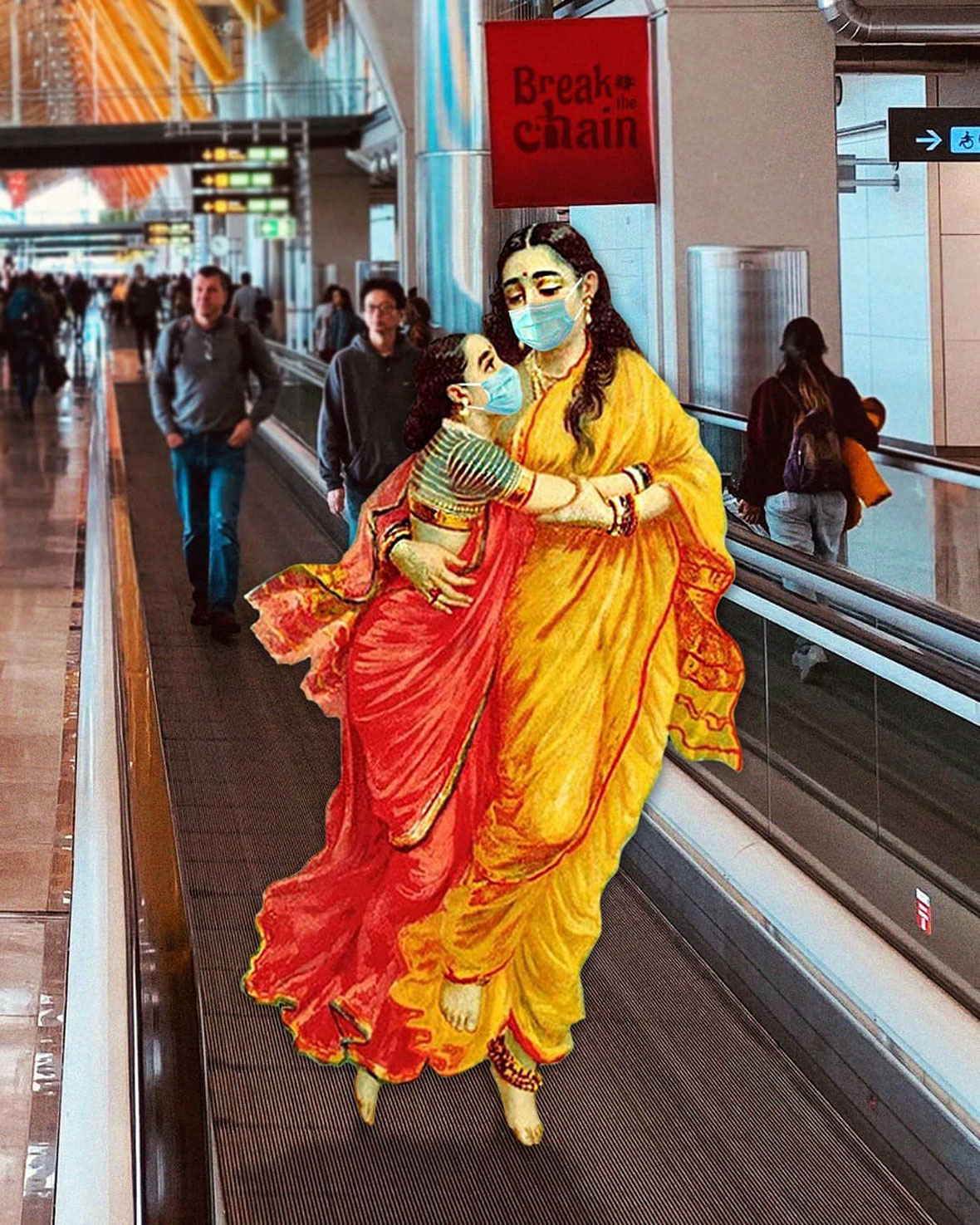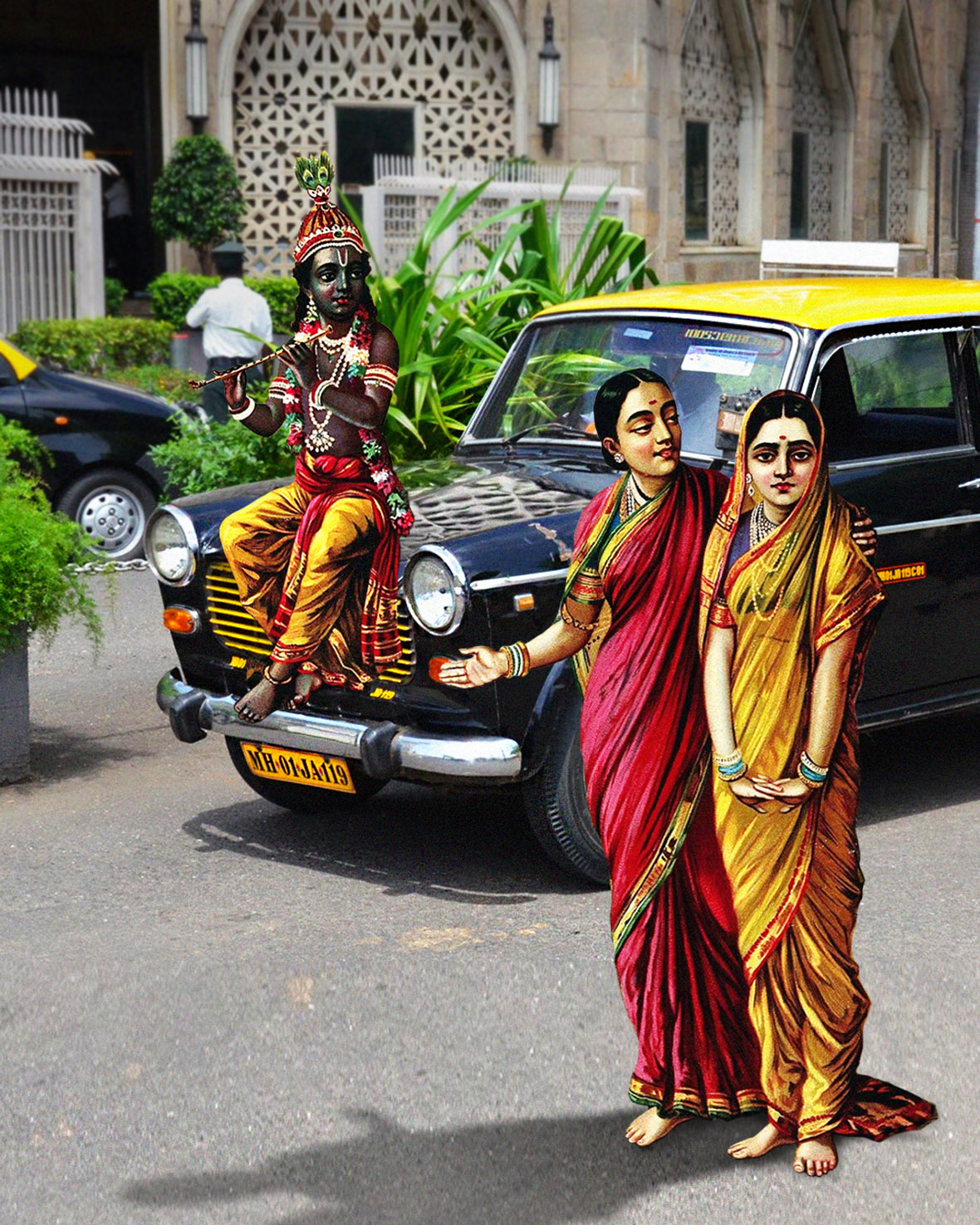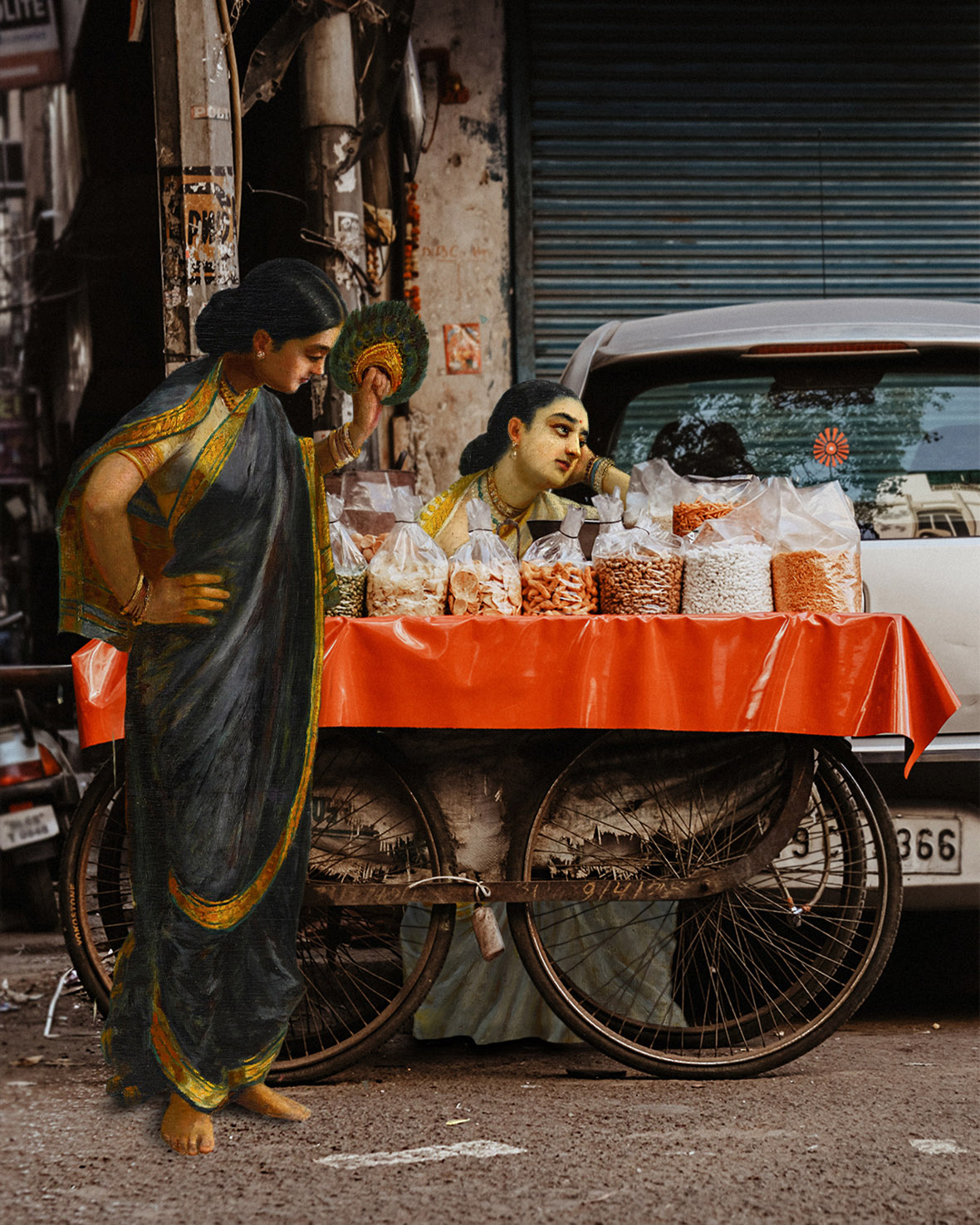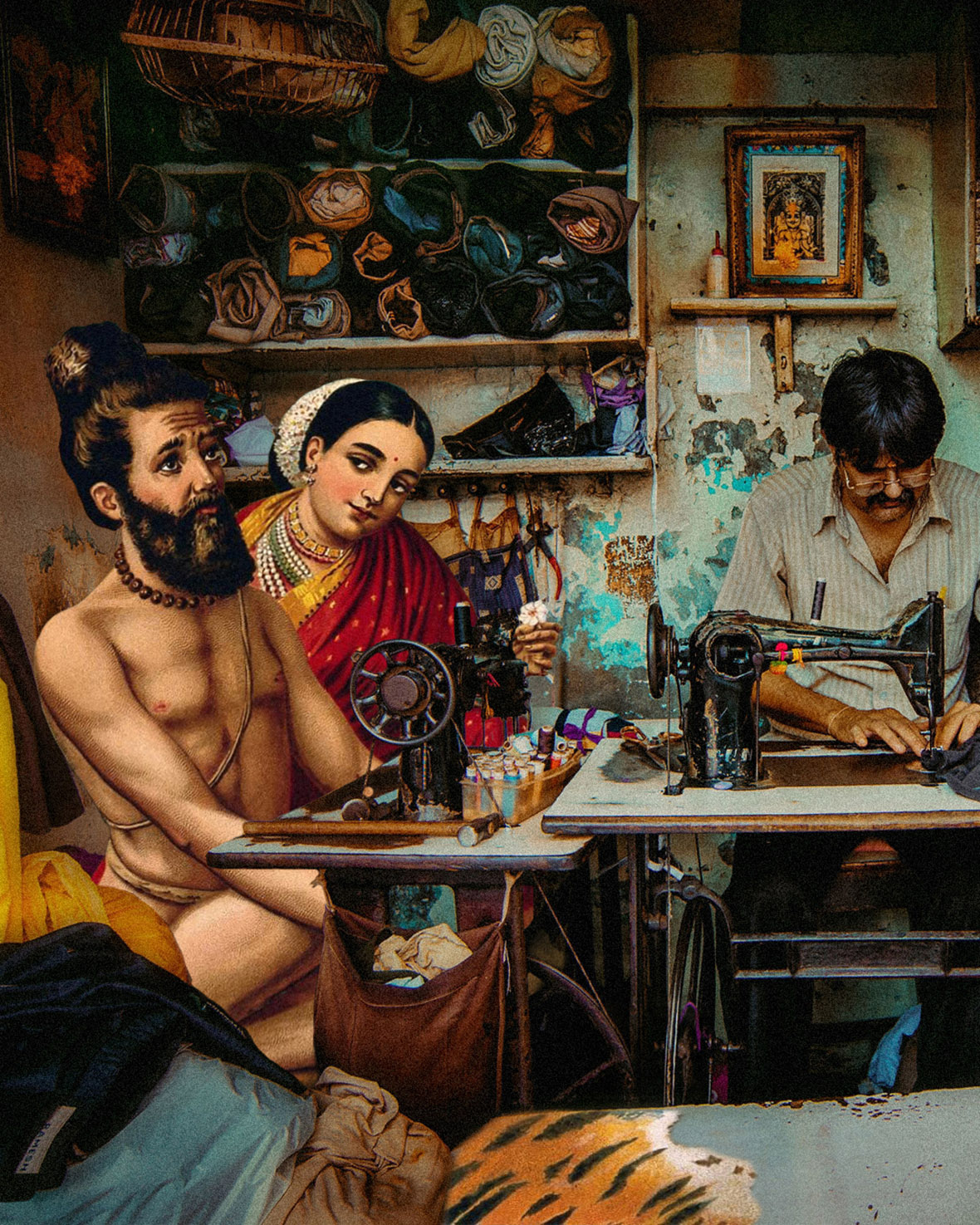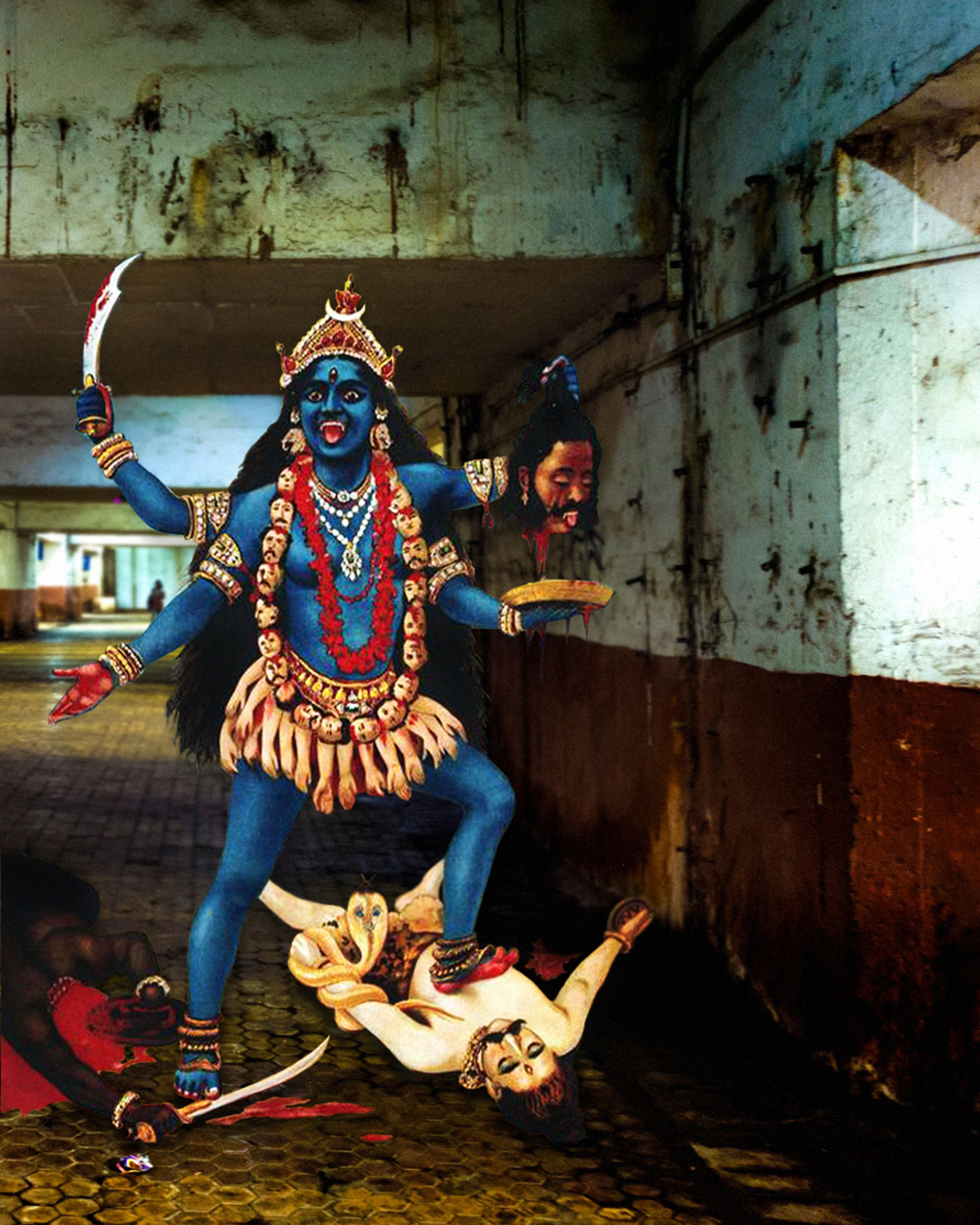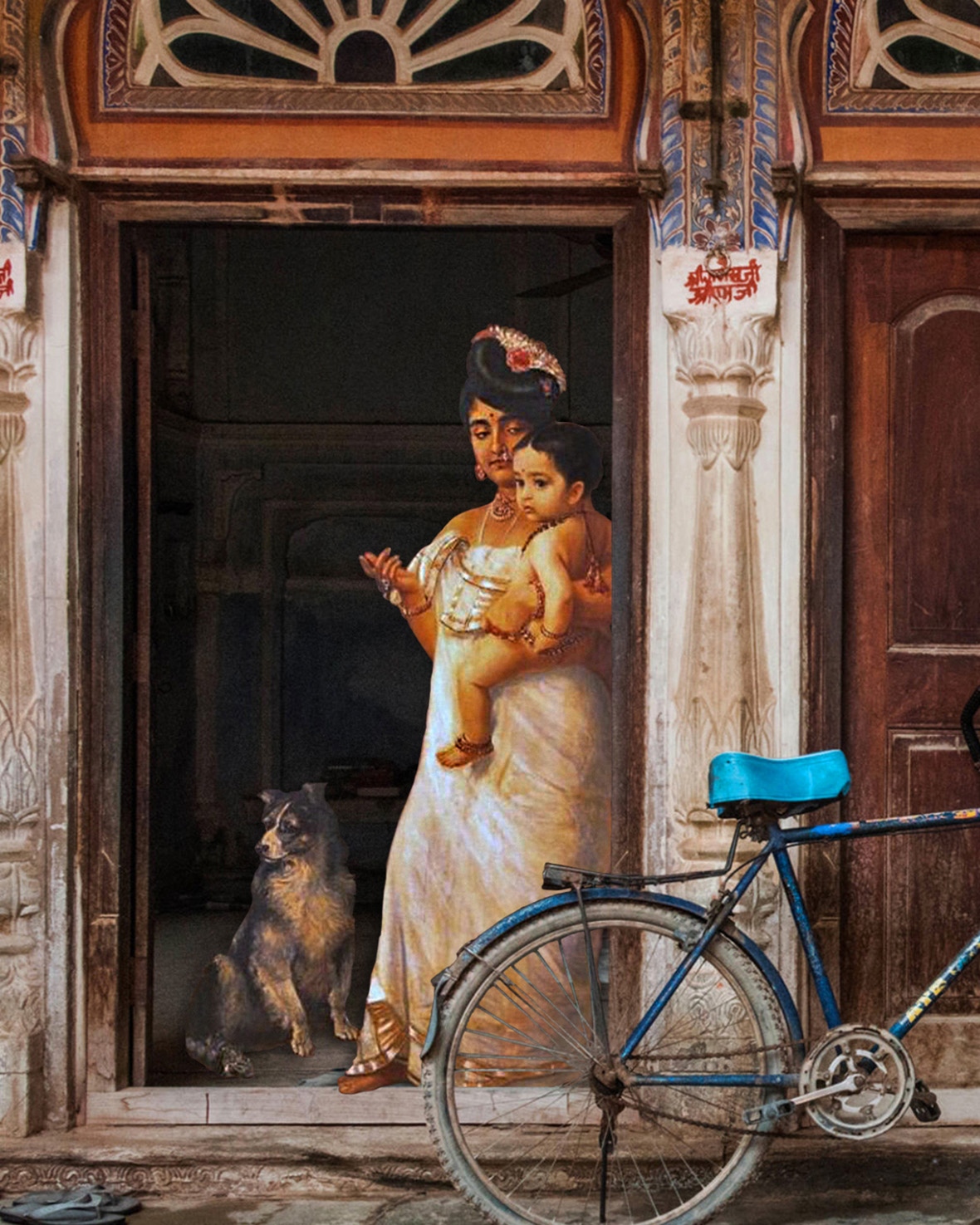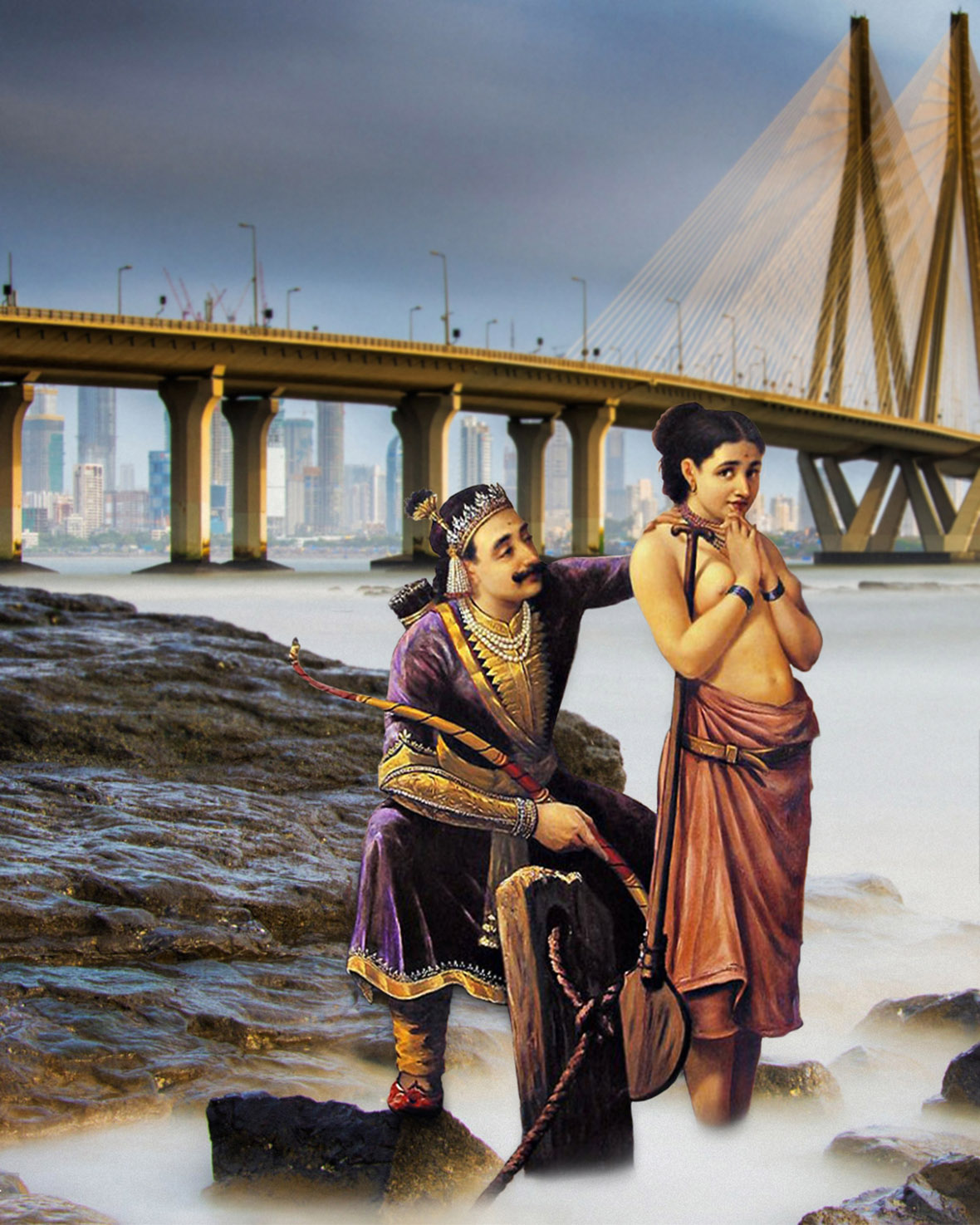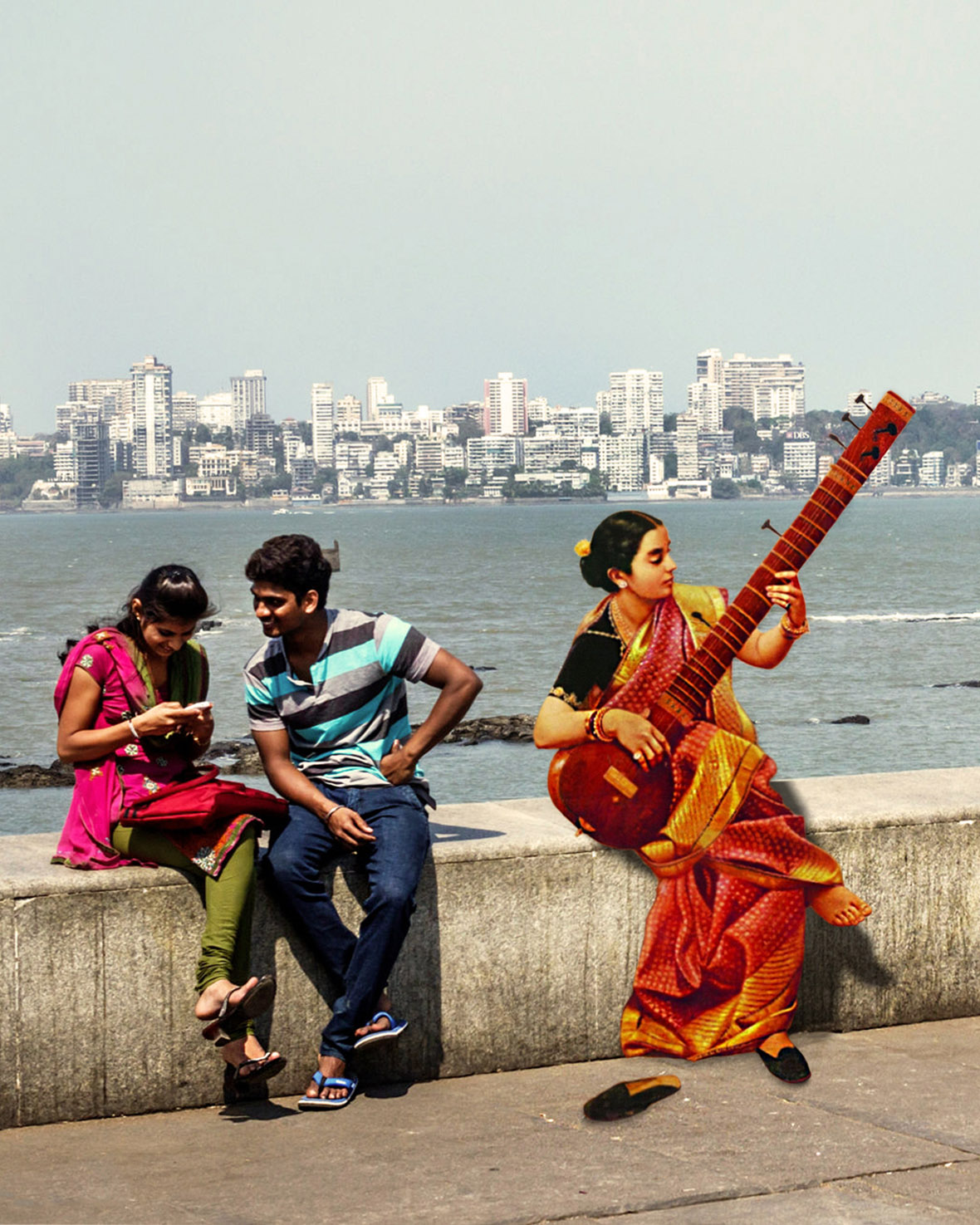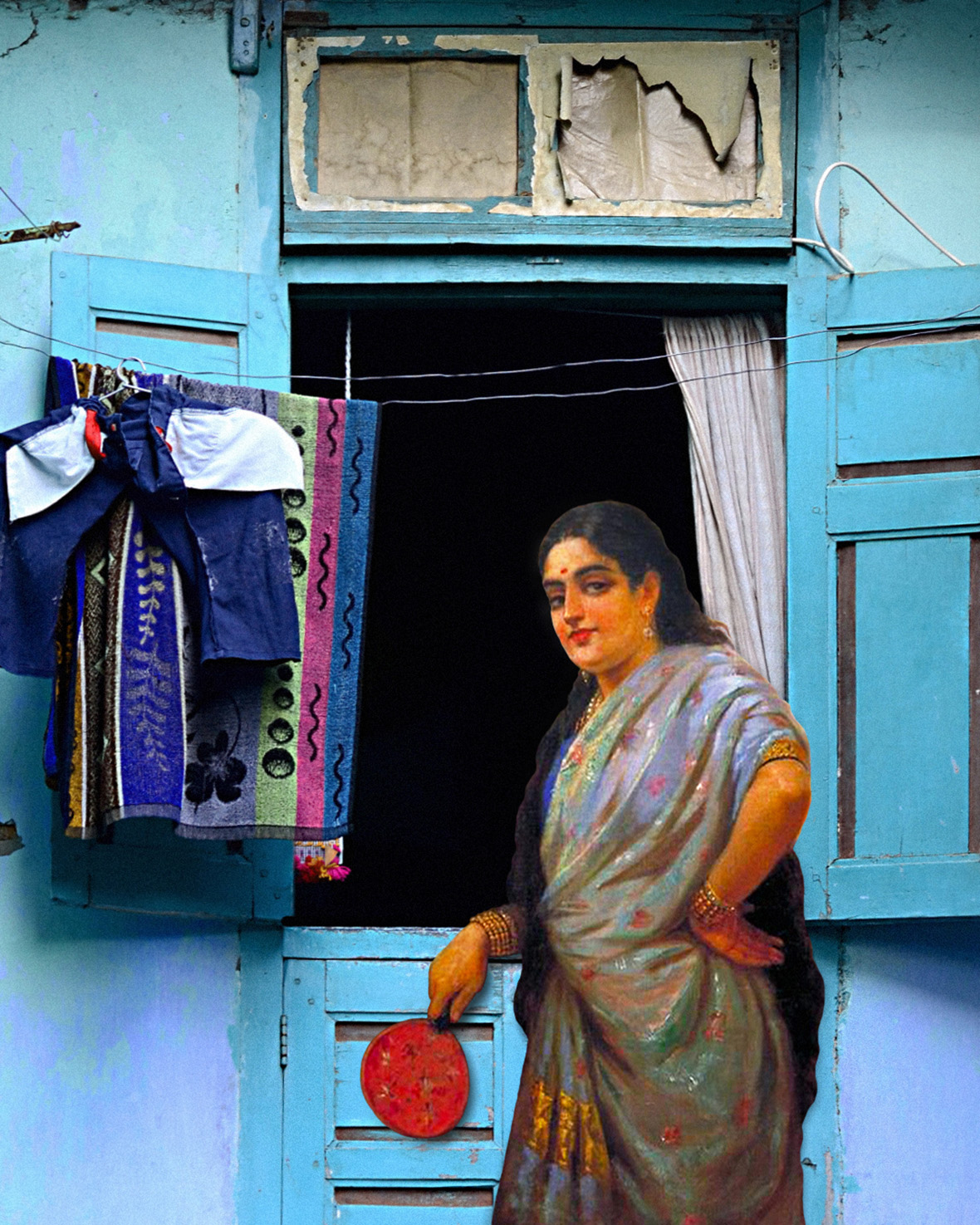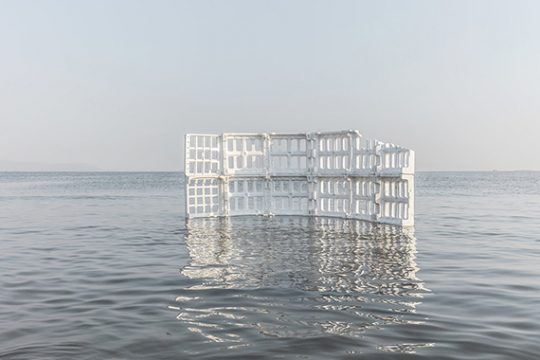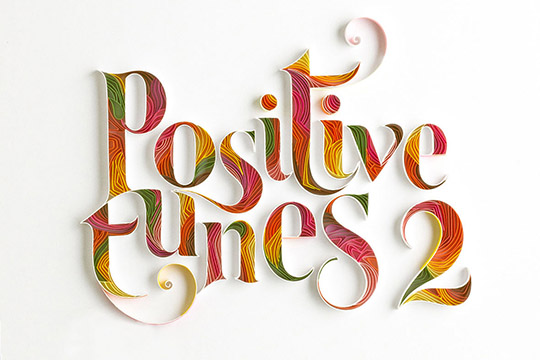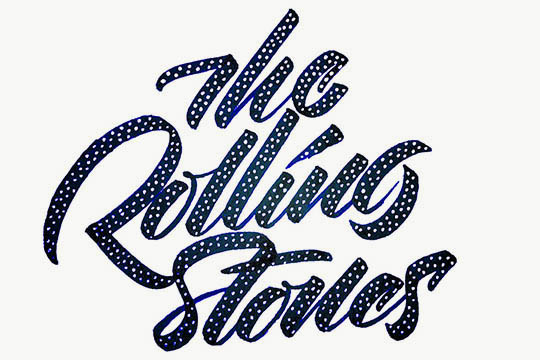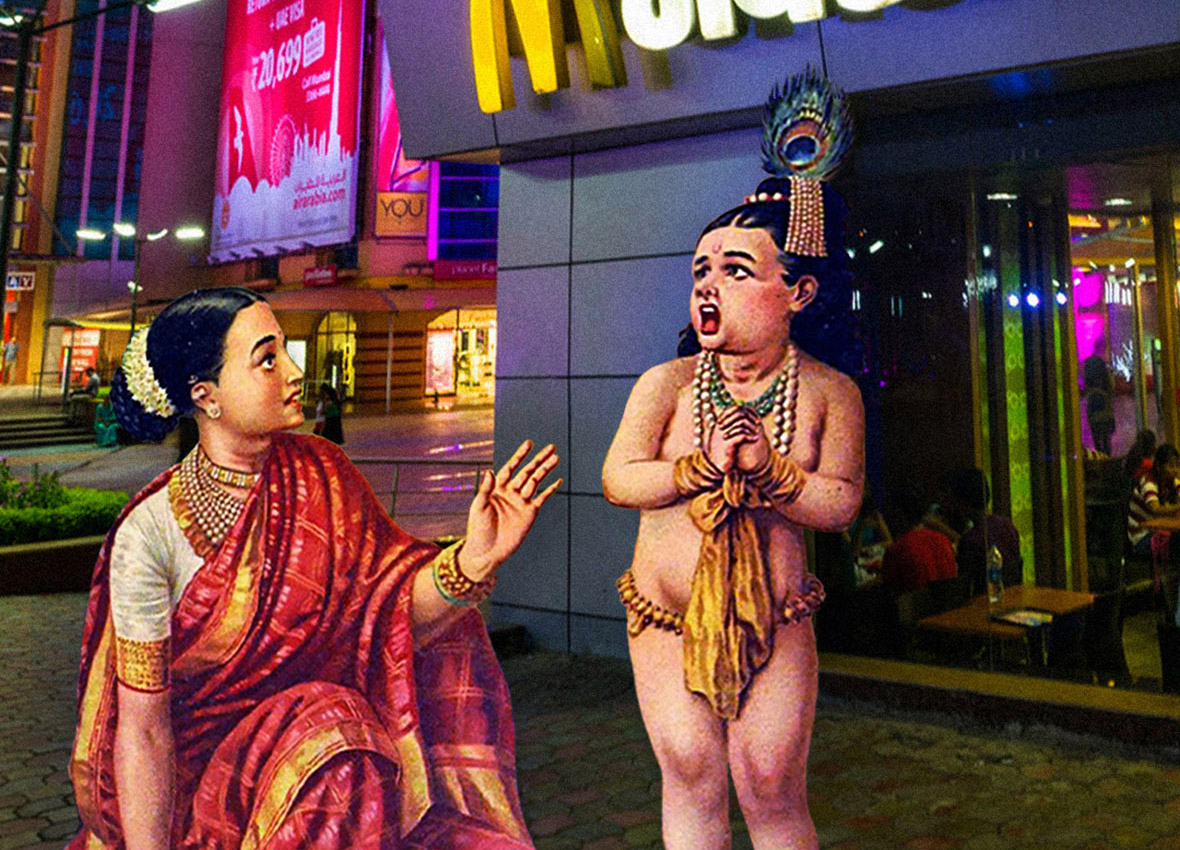
What would it look like if figures in art from centuries past came to life?
Rahul Mathew pluckily asked himself this question and recreated works of one of India’s most famous artists, Raja Ravi Varma (1848-1906), whose works largely depicted Indian gods and goddesses. But Mathew locates them all in scenes from contemporary Mumbai. “I live in a country where history and religion have a lot of importance, and the man who gave faces to most of the Hindu gods and goddesses is Raja Ravi Varma,” he says. “This series looks at what it would be like if characters from his paintings lived today, and how they’d interact with the city.”
如果百年前的画中人都活过来,会是怎样一番景象?
艺术家 Rahul Mathew 大胆提出了这样的假设,旋即就对印度艺术史上最伟大的画家之一拉贾·拉维·瓦尔马(Raja Ravi Varma)的存世作品进行了再创作——他的大多数绘画描绘了印度教的神和女神,但 Rahul 把他们全部置入了当今孟买的实景街头。“我生活在一个历史和宗教都占有重要比重的国家:印度,大多数印度男神女神的形象,最开始都由瓦尔马刻画和普及的。而这个系列就旨在探讨,假设瓦尔马笔下的人物活在当下,他们会与这座城市如何互动。”
Born and raised in the state of Kerala, Mathew had mainly encountered art from his own state while growing up. In college, where he majored in Information Arts and Information Design Practices, he broadened his horizons. “One thing that I learned during college was that there’s no one right answer—nor when it comes to art. This urged me to ask questions.” he recalls. “I started looking at things from different perspectives, and it helped me to break away and unlearn all the things I learned as a kid—cultural values, education, and morals, etc. My four years in art school interacting with a different set of people really helped me, and that is what has shaped me.”
作为喀拉拉邦土生土长的人,Rahul 一直以来接触到的都是喀拉拉邦的艺术文化,直到去大学主修信息艺术和信息设计实践,“我在大学里学到的一件事,是万事万物都没有一个正确的答案,艺术也不例外、这促使我提出问题。” Rahul 说,“我开始从不同的角度看待事物,它帮助我摆脱和忘记了我小时候学到的所有东西,无论是文化价值观、教育还是道德观等等。我在艺术学校的四年与不同人群的互动帮助了我很多,这也塑造了我和我的作品。”
On a visit to Hasta Shilpa Heritage Village in Udupi, a museum that preserves and restores traditional buildings and artifacts from different periods caught Mathew’s eye. “I learned that in 1894 Raja Ravi Varma started the largest and most innovative lithographic printing press in Mumbai, and in 1899 shifted it to Malavli, near Lonavala, in Maharashtra state. This information triggered me to dwell more on his printing press and his history,” he says. Today, Varma’s paintings still decorate the homes of many Indian families. In his own work Mathew seeks to add a modern twist.
他走访了 Udupi 的 Hasta Shilpa 文化村,这个修复和保存不同时期的传统建筑和文物的博物馆抓住了他的眼球:“我知道瓦尔马于 1894 年在印度孟买开创了最大最具创新性的平版印刷机,后来在 1899 年转移到马哈拉施特拉邦拉纳瓦拉附近的马拉维利。这一信息促使我对他的印刷术和历史作了更多的研究。” Rahul 表示,时到如今,瓦尔马的绘画在大多数印度家庭中仍然被用来当作装饰像,而他想通过自己的创作去传达一定的现世意义。
In the piece Menaka Getting Vishwamitra Some Clothes Stitched, Mathew tries to comment on gender equality. In Kali Killing Mahishasura for Spitting Paan Masala in a Public Place, he wants to comment on the nuisance of public spitting. In fact, each work is a commentary on social issues or look to inspire changes in society. “In a country like India, which has a lot to offer, I always find inspiration,” he says. “In some of the works, I try to suggest subtle messages. I keep them toned-down and approach them all in my own way.”
在作品《梅纳卡让维希瓦米特拉缝衣服》(Menaka Getting Vishwamitra Some Clothes Stitched)中,Rahul 试着讨论性别平等问题;在作品《卡利杀了玛希沙苏拉,因为他在公共场合吐痰》(Kali Killing Mahishasura for Spitting Paan Masala in Public Place),Rahul 想就随地吐痰造成的滋扰发表一下自己的意见……其实,Rahul 说,自己的每个作品都对社会问题或社会变化发表一番评论。“像印度这样的、有很多东西可以提供的国家,就是我的创作源泉。”Rahul 说,“在一些作品中,我试图通过作品描述一些社会问题和变迁。它们可能不会被大声讲述出来,我试图从微妙的角度切入,以将其传达出来吧。”
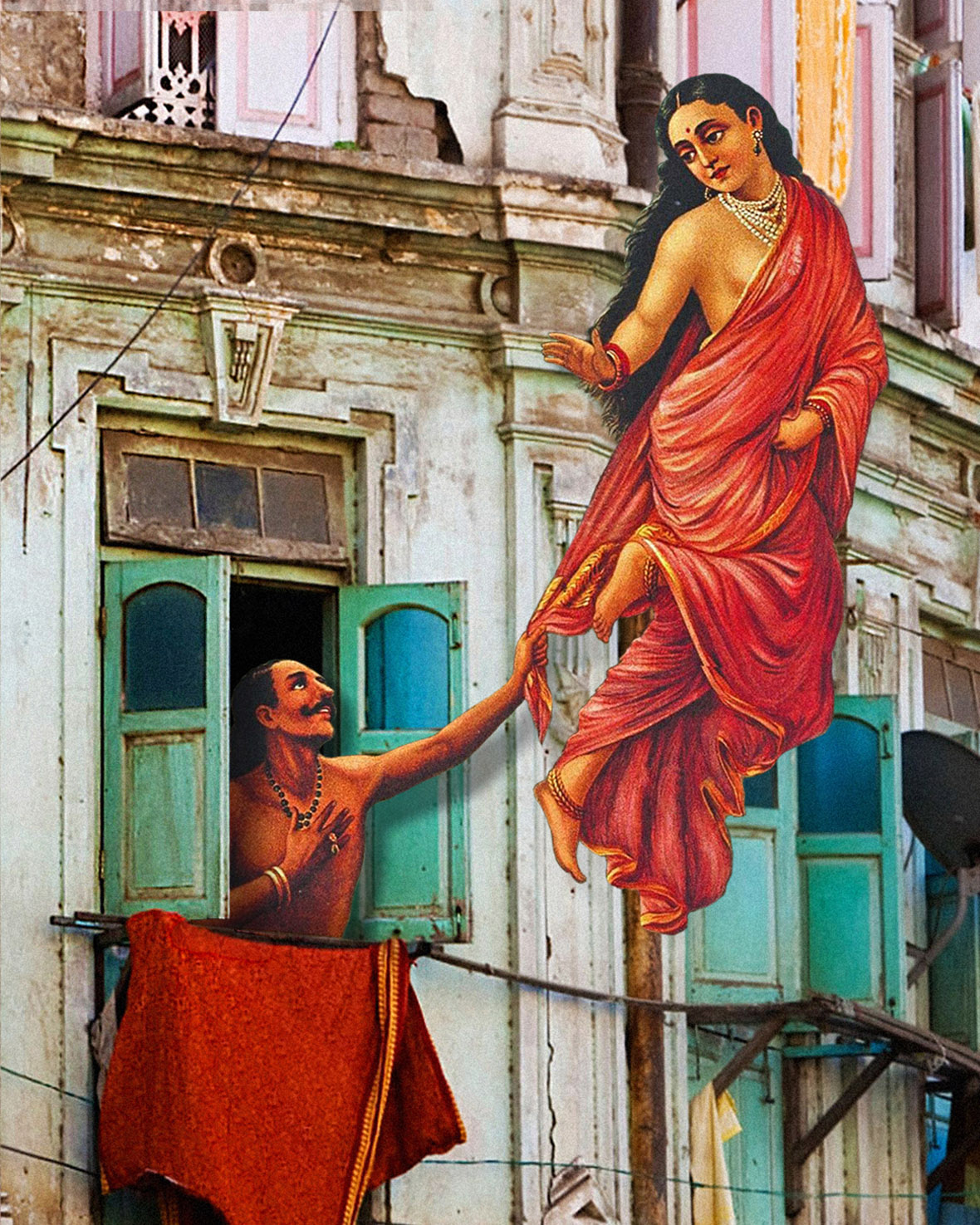
Like our stories? Follow us on Facebook and Instagram.
Website: www.rahulvmathew.com
Instagram: @rahul_v_mathew
Behance: ~/rahul_mathew
Contributor: Chen Yuan

